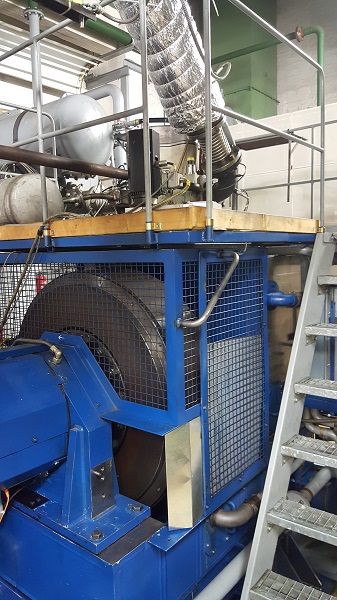Heavy oil-water emulsion for bivalent duel fuel engines

Project description
Ship diesel engines are highly-efficient machines. The relatively slow engine speed and the high combustion temperatures in the stoichiometric combustion chamber zones lead to the formation of large amounts of nitrous oxide. Unburned hydrocarbons, carbon monoxide, sulphur dioxide and particles are also emitted. In previous years, the development of ship diesel engines was characterised by adherence to ever-stricter emission regulations, whilst maintaining the same efficiency levels. The regulations for nitrous oxide and sulphur oxide emissions in accordance with the International Maritime Organization (IMO) are relevant in this respect. When the IMO Tier III emission standard was introduced in 2016, the nitrous oxide emission levels in the so-called emission control areas (ECA), were drastically reduced yet again. This has the advantage that expensive measures such as exhaust gas after-treatment and possible additional operating materials are not required.
The influence of a fuel-water emulsion, inlet pipe injection and direct water injection on the combustion process in duel-fuel operation was investigated within the scope of the research project. The proportion of water and the energetic ignition jet quantity varies, and high-viscosity heavy oil is also used as ignition oil as well as diesel fuel. As a result of the evaporation enthalpy of the water that is introduced, it is possible to lower the combustion temperatures and therefore the nitrous oxide emissions, whilst improving other parameters such as the filter blackening coefficient, the effective degree of efficiency and the combustion stability at the same time. Because of this operating strategy, it is possible to undershoot the IMO tier III nitrous oxide limit that currently applies in the emission control areas, and achieve good results with the other combustion-related parameters at the same time.
The procedure that is examined in the research is therefore in direct competition with the exhaust gas treatment technology using SCR catalytic converters. However, it is advantageous that from a commercial point of view the procurement of an aqueous urea solution as a reduction material is not necessary, and the procedure under investigation is characterised by requiring less space. The operating strategy is aimed at the operators of ship engines that run at medium speed, who are seeking solutions for adhering to the applicable emission limits inside and outside the emission control areas with requirement profiles that fluctuate considerably.
